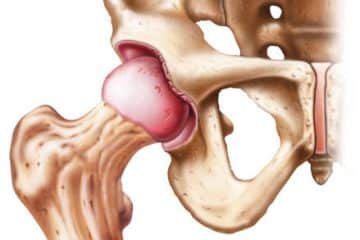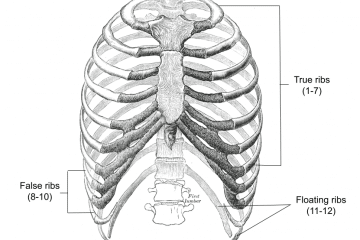Orthopedic Surgery Types – Overview
Orthopedic surgery is a medical branch that focuses on the surgical management of musculoskeletal problems (i.e., the bones and connective tissues, such as ligaments and tendons). This includes anything from anterior cruciate ligament and meniscus surgery to hip replacement and spinal fusion, among other operations.
Orthopedic surgery may be performed to fix issues related to a condition, age, or an accident, and so may be meticulously planned or completely unplanned.
Shoulder Surgery
1. Bankart repair
A Bankart Shoulder Repair procedure is a surgical technique for the repair of recurrent shoulder joint dislocations. Within the procedure, the worn-out ligaments are re-attached to the right place within the shoulder, using the target of rebuilding normal function.
2. Reverse shoulder replacement
A reverse total shoulder replacement is a surgical technique that involves modifying portions of the shoulders’ architecture. It works by reversing the position of the ball and socket of the shoulder joint with an implant and prostheses.
3. Rotator cuff surgery
The procedure to repair a damaged rotator cuff tendon in the shoulder is known as rotator cuff surgery. Open surgery or shoulder arthroscopy, which employs smaller incisions, can be used for the treatment.
4. Shoulder replacement surgery
Shoulder replacement involves removing broken bone and replacing it with metallic and plastic components. Shoulder arthroplasty is the medical term for this procedure. The bone’s spherical head fits into a shallow socket in the shoulder.
5. Shoulder arthroscopy
Shoulder arthroscopy is a procedure that examines or repairs the tissues within or around your shoulder joint using a small camera known as an arthroscope. The arthroscope is placed into your body through a small incision.
Elbow Surgery
1. Elbow arthroscopy
During elbow arthroscopy, your surgeon inserts a small camera into your elbow joint called an arthroscope. Your surgeon uses the images from the camera to guide tiny surgical instruments, which are displayed on a television set. This procedure is used to diagnose and treat diseases, and make postoperative recovery easier.
2. Elbow replacement surgery
Elbow replacement surgery (elbow arthroplasty) is a procedure in which doctors replace a damaged elbows’ joint and restore flexibility. A doctor replaces your elbow joint with an artificial joint during this procedure. The whole elbow is not always replaced during elbow replacement surgery.
3. Tommy John surgery
Tommy John surgery, also known as ulnar collateral ligament reconstruction, is a surgical graft technique in which the ulnar collateral ligament in the medial elbow is substituted with a tendon from elsewhere in the patient’s body or one from a deceased donor.
Wrist Surgery
1. Wrist arthroscopy
It is a procedure that allows doctors to see into the wrist joint. It is a minimally invasive procedure that can be used for both diagnostic and therapeutic reasons.
2. Wrist fusion
Wrist arthrodesis (wrist fusion) is a treatment that immobilizes the wrist joint by merging the radius and carpal bones together. It’s a pain-relieving surgery utilized in circumstances including severe wrist arthritis, wrist fractures, and serious ligament damage.
3. Wrist replacement
Total wrist arthroplasty (wrist joint replacement surgery) involves replacing a severely damaged wrist joint with an artificial joint comprised of metallic and plastic pieces. When other treatment options fail to offer alleviation, it alleviates pain and improves function.
Knee Surgery
1. ACL reconstruction
ACL reconstruction surgery usually entails utilizing a graft to repair the ligament. Because most torn ACLs cannot be sutured back together due to the surrounding microenvironment, reconstruction is frequently indicated.
Current attempts have been devoted to enhance this environment such that the ACL can be repaired without the need of a graft.
2. Knee replacement
Knee replacement, commonly known as knee arthroplasty, is a surgical operation that resurfaces a knee that has been destroyed by arthritis.
The ends of the bones that make up the knee joint, as well as the kneecap, are capped with metallic and plastic pieces. If you have severe arthritis or a major knee injury, you may want to undergo this operation.
3. Partial (unicompartmental) knee replacement
A partial knee replacement is when only one component of a damaged knee is replaced. It can be used to substitute the inner part of the knee, the outer part of the knee, or the kneecap.
4. Meniscus repair
To allow broken cartilaginous parts to regenerate on their own, the surgeon tries to put them back together.
See Also
5. Knee fusion
Knee fusion (arthrodesis) is a procedure that joins the thigh and shin bones. It is now only used as a last option if knee replacement has done fail or is not an option.
6. Knee reconstruction
Knee replacement (Knee arthroplasty) is a therapeutic surgery that replaces the weight-bearing areas of the knee joint to reduce pain and impairment. It is most typically used to treat arthritis.
Ankle Surgery
1. Ankle arthroscopy surgery
Using a camera implanted through small slits in your skin, your surgeon can see inside your ankle during arthroscopy (keyhole operation). Injury to the joint surface or ligaments, as well as arthritis, can be diagnosed by arthroscopy.
2. Ankle reconstruction
Ankle ligament reconstruction is a tried and tested operation with a high success rate. Ankle reconstruction can help to correct chronic ankle laxity and prevent the ankle joint from deteriorating further.
Expert orthopedic ankle and foot surgeons produce the finest results for this operation.
The injured lateral ligaments are examined after a tiny incision (cut) is made along the outside of the ankle.
If a ligament has been stretched but not ripped, it is cut and shortened, then sewed together at both ends. The ends of a ruptured ligament that is still linked to the fibula bone are mended and sewed together.
3. Ankle replacement
Ankle replacement surgery is a technique that involves replacing a damaged joint in order to relieve pain and discomfort.
The surgery is typically performed under general anesthesia. To access the afflicted joint, your surgeon will create an incision in your ankle.
The damaged pieces of your tibia and talus bones will next be removed by your surgeon. Artificial metallic joints will be attached to the residual bone surfaces, with a piece of plastic put between them.
It is necessary to repair a ligament that has ripped away from the fibula. The ligament is attached to a tiny hole drilled in the fibula with stitches.
Hip Surgery
1. Hip replacement
A doctor removes a painful hip joint with arthritis and replaces it with an artificial joint consisting of metallic and plastic elements. Once all treatments have failed to offer appropriate pain control, it is frequently done. The operation is expected to alleviate pain in the hip joint and make walking easier.
2. Hip arthroscopy
It is a surgical treatment that allows surgeons to examine the hip joint without cutting the skin or other soft tissues. Arthroscopy is a procedure that is used to diagnose and treat a variety of hip disorders.
3. Hip labral repair
This method entails cutting or smoothing the torn region of the labrum. The purpose is to get rid of any loose, damaged, or painful tissue. Because hip disorders are frequently linked, it’s usual for a doctor to treat the hip labrum while also addressing other issues during the same procedure.
4. Hip core decompression
Hip core decompression is a surgical treatment for treating osteonecrosis of the hip and avascular necrosis. It entails boring one or bigger holes into the wasted bone of the femoral head to alleviate the pressure on the bone.
5. Medial patellofemoral ligament reconstruction
It is a procedure that involves the creation of a new medial PFL to assist in stabilizing the knee and protect it from further damage. For patients who have had more than one dislocation, it is a great therapy option.
6. Hip preservation surgery
Hip preservation is a medical procedure that helps to delay or prevent the occurrence of arthritis and, eventually, the need for a hip replacement. The treatments were usually carried out on people in their 50s.
Spinal Surgery
1. Spine fusion
Spinal fusion is a procedure that connects the bones of the neck. A cervical spinal fusion can be performed in a variety of ways. Bone can be extracted from other parts of your body or purchased from a bone donor.
2. Disk replacement
A damaged or deteriorated disk in any region of your spine is replaced with a synthetic disk made of metal or a combination of metal and plastic. Disk replacement is frequently recommended as an alternative to spinal fusion surgery.
3. Diskectomy
A treatment that involves removing the injured piece of a bulging disk from your spine. Nerve fibers near a bulging disk can be irritated or compressed. A discectomy is the most effective treatment for discomfort that radiates down your arms or legs.
4. Spine decompression surgery
A surgical treatment used to alleviate trapped nerves in the spine. It’s only advised if non-surgical procedures have failed. The operation is intended to alleviate symptoms such as leg tingling and pain caused by pressure on the nerves in the spine.
5. Vertebroplasty
Vertebroplasty is a technique that involves injecting a selected glue into a fractured vertebra so as to alleviate pain and restore movement.
6. Foraminotomy
A foraminotomy is a surgical intervention. It expands the space next to one of your spinal column’s bones. The operation releases pressure on the nerves that have been trapped.
7. Laminectomy
A laminectomy is a procedure in which a portion or all of the spinal bone is removed. Trauma, herniated disks, canal constriction (spinal stenosis), or malignancies can put pressure on the spinal cord or nerve roots, which can be relieved with this procedure.
Only after other medical interventions have failed is a laminectomy performed.
Hand and Foot Surgery
1. Hand reconstruction
Reconstructive hand surgery is primarily used to realign the hand so that it can do tasks efficiently. It can also help improve the client’s self by improving the cosmetic appearance of the hand.
2. Finger fusion
Finger joint fusion is a technique in which a doctor cuts into a painful finger, eliminates diseased tissue, and fuses the joint and the bones it links with a wire to keep the finger straight.
3. Finger joint replacement
finger joint replacement is a surgical process that entails removing a diseased or arthritic finger joint and replacing it with a prosthesis.
4. Finger reattachment
Replantation is the surgical reattachment of a completely severed finger to a person’s body. The purpose of this operation is to restore as much use of the afflicted area as feasible to the patient. If the replanted finger is expected to operate without pain, this treatment is suggested.
5. Foot reconstruction
Foot reconstruction is a procedure that corrects the foot’s architecture and restores function lost due to trauma, congenital abnormalities, infections, or other disorders.
6. Bunion surgery
Bunion surgery is performed to relieve discomfort and repair a bunion’s deformity. A thickening of the bone or tissue around a joint at the bottom of the big toe or the bottom of the smallest toe is called a bunion (hallux valgus).
7. Hand transplant
A hand transplant is a medical technique that involves the transfer of a human hand from one person to another. The donor’s hand is usually taken from a brain-dead volunteer and placed into someone who has lost his hand.
Miscellaneous Procedures
1. Bone grafting
A bone graft is a surgical operation involving bone tissue transplantation to repair or reconstruct bones. We can replace lost bone and supporting tissues by transplanting healthy bone tissue.
2. Carpal tunnel decompression
A surgeon cuts through the ligament, pulling down on the carpal tunnel during a carpal tunnel release. This allows the median nerve and tendons to travel through the tunnel with more room, which usually improves pain and function.
3. External fixation
External fixation is a surgical procedure in which pins are drilled into the bone and then exit the body, linked to a stabilizing plate on the outside. Internal fixation is an alternative in which the components utilized to give stability are wholly within the patient’s body.
4. Osteotomy
Ostectomy is a surgical procedure that removes the damaged part of the bone. It’s a pain-relieving operation that’s designated for situations where pain can’t be relieved by any other way.
5. Fibula-free flap
It’s a surgical procedure of Filling a bony hole in the upper or lower jaw with a fibular flap. It’s common procedure to replace damaged bone.
6. Free muscle transfer
Muscle transfer is a tested method of using functional muscles from one part of the body to move paralyzed parts of the other. This is the most common method of muscle resurrection.
7. External fixation
External fixation surgery uses transfixing metallic plates through the fragments and a compressive device attached to the pins outside the skin surface to hold the fragments of a broken bone together.
8. Rotationplasty
It is a procedure for treating a bone tumor in the knee area. The central half of your leg, along with the knee, is removed by a surgeon. The lower shin, ankle, and foot are reattached to the residual femur bone. They also twist the lower leg 180 °, functionally turning the ankle joint to work as a knee joint.
9. Hemipelvectomy
A hemipelvectomy (pelvic resection) is a surgical treatment in which a part of the pelvic girdle is removed. This treatment is most typically used to treat pelvic neoplastic diseases. Internal and external hemipelvectomy are two types of hemipelvectomy.
10. Limb lengthening
Limb lengthening is accomplished by utilizing the body’s natural ability to regenerate new bone and the surrounding tissue, ligaments, vasculature, and nerve fibers. The procedure begins with the cutting of the bone to be lengthened after that.
11. Tendon transfer
A tendon transfer is a medical procedure wherein the tendon’s insertion is relocated but the origin remains the same. Not recreation, but redistribution of muscle strength is the goal of tendon transfer.
12. Cartilage repair
Smoothing and cutting damaged or broken cartilaginous fragments can be part of cartilage repair. Artificial pieces may be used to substitute worn-down cartilage.
13. Limb salvage surgery
Limb salvage surgery tries to preserve the limb by cutting the tumor-affected portion of the bone as well as some of the surrounding tissues. An implant, a bone graft or a metallic prosthesis, is used to replace the missing bone.
14. Sacrectomy
Sacrectomy is a surgical procedure that is performed to remove pelvic malignancies with sacral attachments. It could be a simple treatment with clean edges or a tough surgery with positive edges on nerve roots and significant residual impairment due to nerve supply loss to the anal and urethral smooth muscles.
15. Nerve decompression
Any operation to relieve pressure on a nerve is known as a nerve decompression surgery. Because of the underlying bone structure, some nerves are more susceptible to compression than others.
The goal of nerve decompression is to either remove whatever is pushing on the nerve or release any tiny gaps round the nerve to permit it more room, or both.
16. Microvascular surgery
Microvascular surgery is used to reconnect severed fingers, hands, arms, and other body parts. This is accomplished by rejoining the tiny blood vessels, and reinstating circulation before the harmed tissue dies.
17. Cartilage Restoration
Cartilage Restoration is a technique that resurfaces, realigns, and stabilizes a patient’s knee, preventing the need for a joint replacement.
18. Nerve transfer
A working nerve’s branch is severed and sutured to a non-functioning nerve.
19. Nerve grafts
Nerve grafts are sensory nerve segments extracted from another region of the body and utilized as allografts. The regenerated nerve fibers sprout from the proximal nerve segment, through the graft, and via the distal nerve segment into the targeted muscles.
20. Toe-to-thumb transfer
It is a surgical operation in which a toe is grafted onto the hand to replace a missing or defective digit.
21. Vertebral column resection
It is the removal of one or more spines from the vertebral column. In adults and children, vertebral column excision is performed to repair specific spinal abnormalities.
References
https://www.asahq.org/madeforthismoment/preparing-for-surgery/procedures/back-surgery/
https://www.thesteadmanclinic.com/orthopedic-care/elbow-surgery
https://www.mayoclinic.org/tests-procedures/hip-replacement/about/pac-20385042
https://www.verywellhealth.com/types-of-shoulder-surgery-4134622
See Also
How Long Can You Live without a Pancreas

Dr.Sharif Samir Alijla, is a general medical doctor and a well-rounded professional that cares and treats patients from Palestine. I participated in many medical studies and conferences, I've launched a range of community initiatives and taken part in a variety of leadership and change training programs. I worked as an author for many medical websites such as TebFact . I specialized in writing medical articles from authoritative and updated sources in a simple and smooth the way for the reader.



